Hummingbirds are the smallest birds in existence.
They’re also one of the coolest.
Imagine, as a human, being able to throw 80 jabs per second! That’s how many times the little hummingbird can flap its wings in flight!
What’s more, a hummingbird doesn’t get bigger than two grams! For context, this is about the weight of two stacked dollar bills and less than the weight of a single penny!
I find this very amazing!
But what if I told you that there are more than 10 existing hummingbird species?
Let’s learn about the types of hummingbirds on our planet together!
How Many Types of Hummingbirds Are There?
Hummingbirds get their name from the sound that their rapidly flapping wings make.
Flapping 4,800 times per second will surely break the sound barrier a little. The world is lucky they’re tiny!
There are 15 different types of hummingbirds in the US. Below is a brief description of them.
Anna’s Hummingbird
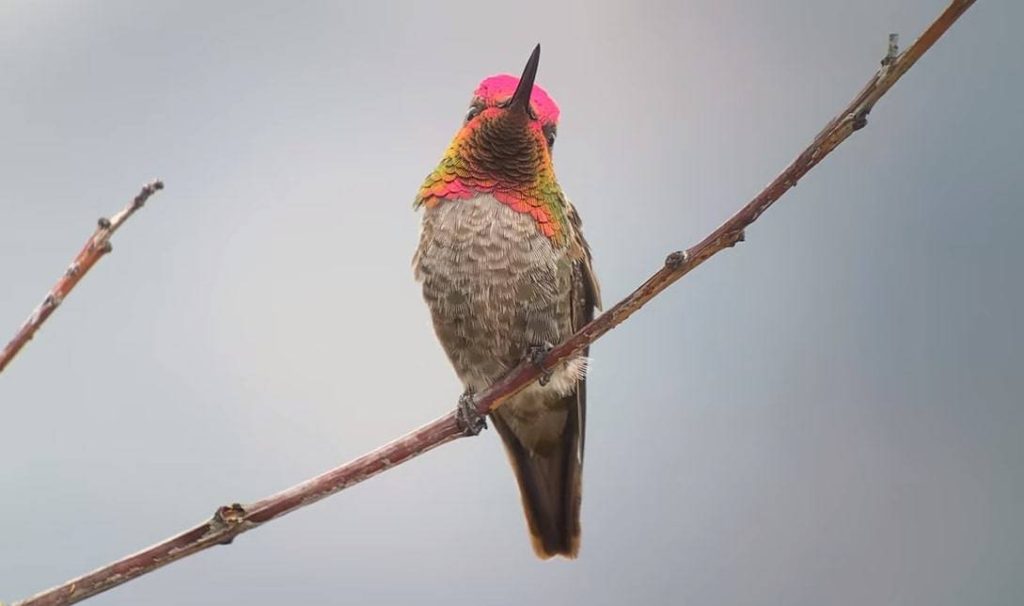
Scientists call this hummingbird the “Calypte anna”. It’s only four inches tall and just happens to be the most common hummingbird in the US.
It’s mostly green and gray and has a red crown. It is, in fact, the only hummingbird with a red crown.
It’s found mostly in the U.S. Pacific coast, west of the Sierra Mountains, frequently in coastal lowlands and desert areas in winter, where it normally migrates to after breeding in Vancouver, Canada south to northern Baja in California and east through southern Arizona.
Allen’s Hummingbird
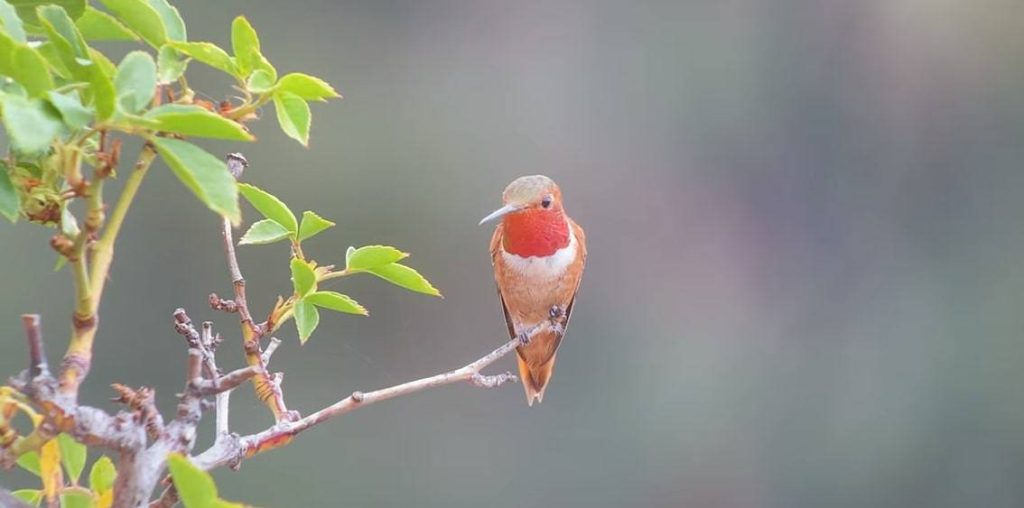
The scientific name for Allen’s hummingbird is “Selasphorus sasin”. The tiny bird maxes out at four inches as well.
It closely resembles the Rufous hummingbird with its reddish tail and dark bill. The key difference is in its brighter, green back.
Allen’s hummingbirds are found only in the foothills of coastal California, and in southern Oregon. They migrate occasionally to Texas.
They spend their winters as far south as southern Mexico, from where they move north up the Pacific Coast in late winter then south through the mountains in late summer.
Broad-Tailed Hummingbird
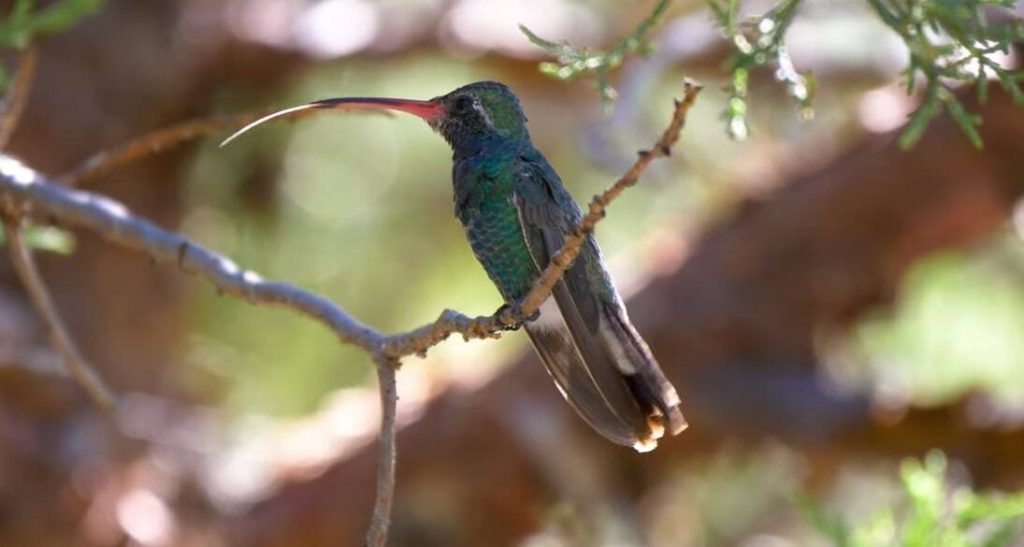
This four-inch hummingbird is called “Selasphorus platycercus”. It is one of the few whose male and female can be distinctly identified.
The males have a red-rose throat, with white underparts and green sides, while the females have a white throat speckled with iridescent green or bronze.
The hum of its wings is a little harsher than that of other hummingbirds. While others (mostly) produce a steady hum, its wing beats produce loud, harsh, whistling sounds.
You can find them all summer round in California and in Mexico, where they also spend their winter.
Black-Chinned Hummingbird
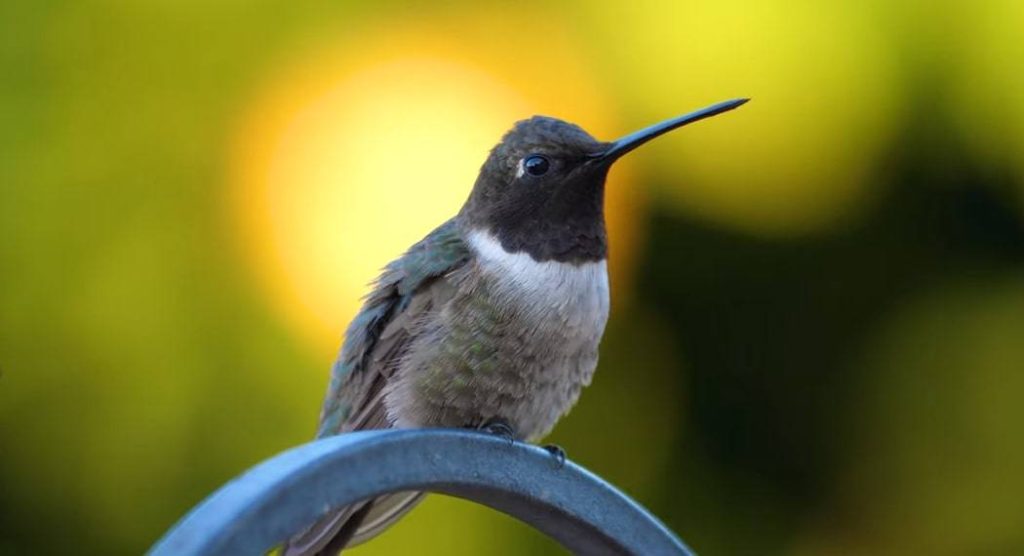
“Archilochus alexandri” is the scientific name for the Black-Chinned hummingbird, which can be found in the mountains of the Western US, particularly at lower elevations, from deserts to mountain forests during the summer and along the Gulf Coast during the winter.
The name “black-chinned” is mostly due to the appearance of the males. Their general appearance is metallic green, but the females have a whitish throat.
It is similar in appearance to the Ruby-throated hummingbird.
According to bird researchers, this hummingbird is one of the more migratory types of hummingbirds.
Blue-Throated Mountain Gem
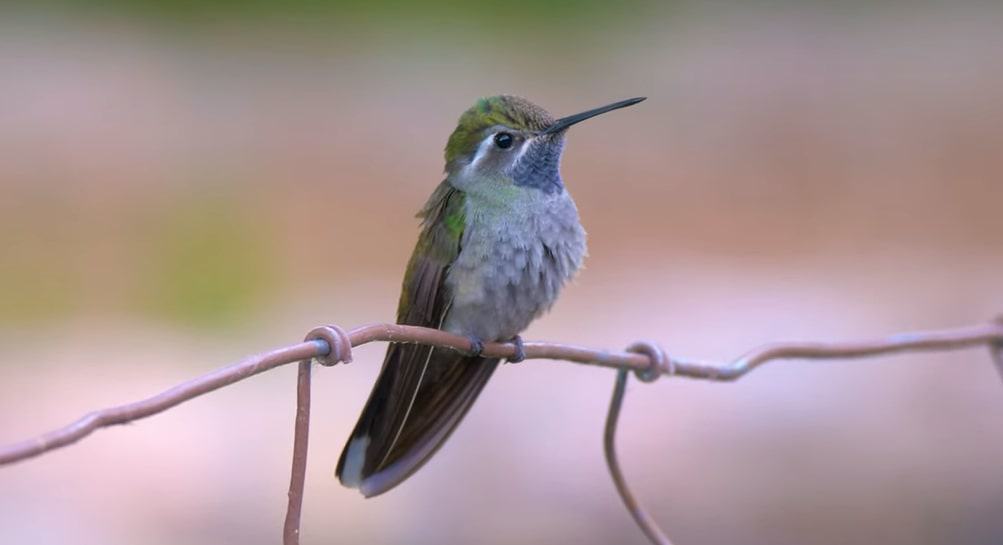
The Blue-Throated Mountain Gem is one of the largest hummingbirds… by one inch.
It maxes out at five inches, making it slightly heavier than the average hummingbird, which weighs two grams.
Scientists call it “Lampornis clemenciae” and it is a hummingbird with a double white line on its face and a long white tip on its tail. The males have a blue throat and the females have a dull gray throat.
The large Blue-Throated Mountain Gem hummingbird is found near canyon streams in Arizona, New Mexico, and Texas.
Calliope Hummingbird
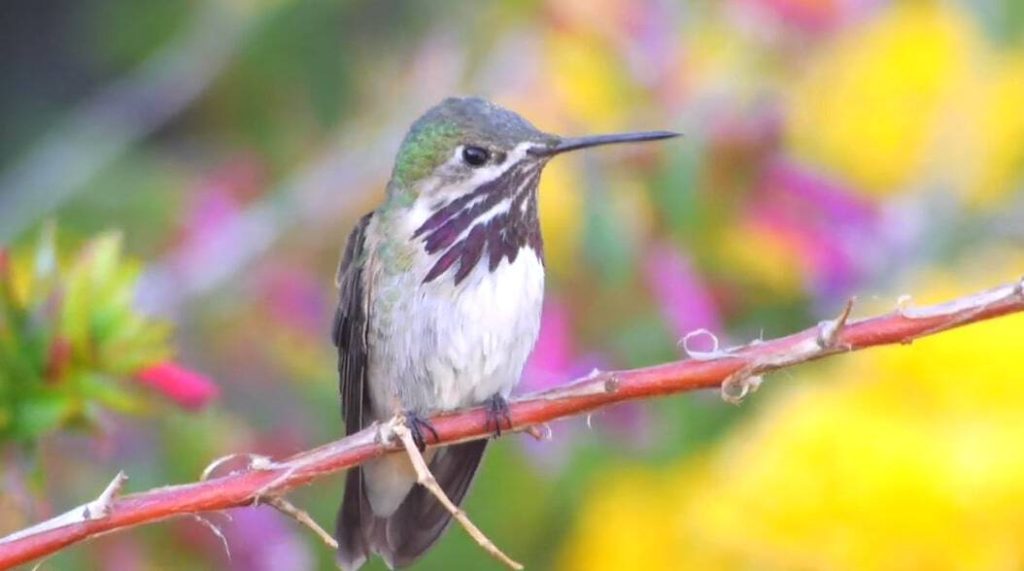
The Stella Calliope is one of the smallest hummingbirds ever. It maxes out at three and a quarter inches.
Its adaptation to mountain areas and meadows helps keep it safe because its size makes it easy prey for predatory birds and animals.
Calliope Hummingbirds primarily breed at high elevations in the mountains of the northwestern United States and Canada into Alaska.
Males have a V-shaped carmine-streaked throat while females have red-streaked throats. Generally, they have very short bills and tails and are similar to the Calypte anna in overall appearance.
Costa’s Hummingbird
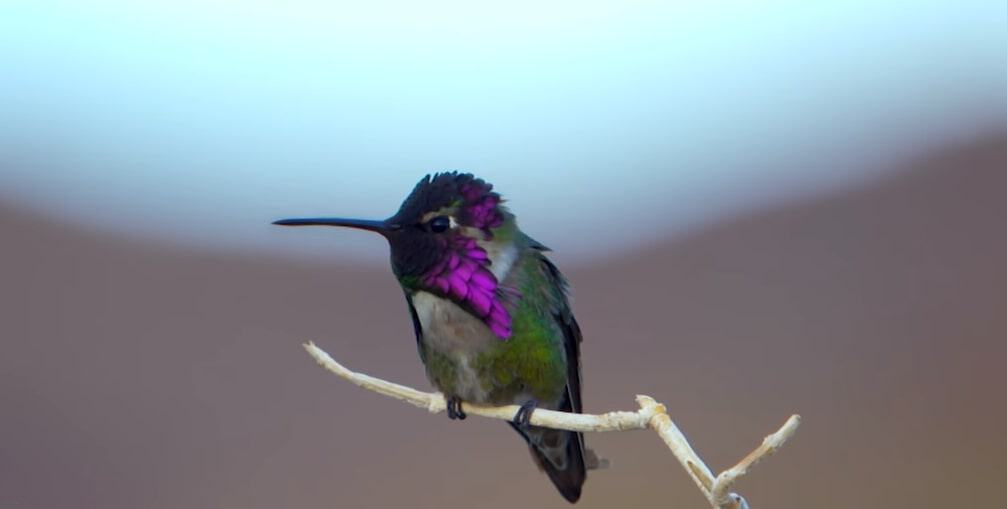
Scientists named this beautiful and regal looking hummingbird “Calypte costae” but its “regular” name, “Costa’s hummingbird” is an ode to French nobleman Louis Marie Pantaleon Costa, Marquis de Beauregard, by Jules Bourcier, the French ornithologist who studied and documented this bird in 1839.
It is even smaller than the Calliope, maxing out at three and a half inches.
The male has a deep purple head and gorget extending far down the sides of the neck. The female Calypte costae has a white throat and underparts, sometimes with some violet feathers.
Ruby-Throated Hummingbird
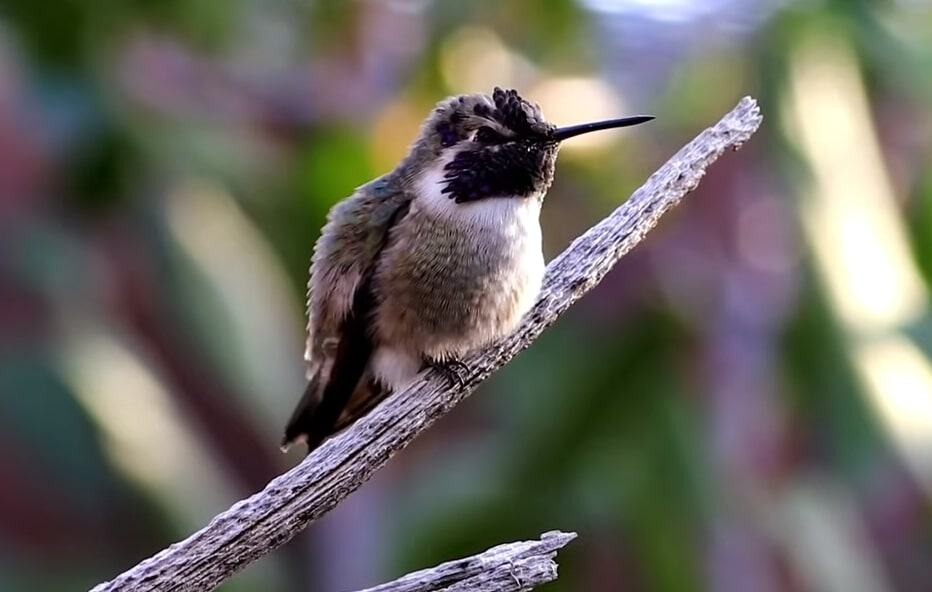
Scientists have given the name “Archilochus colubris” to the Ruby-throated hummingbird, which is a close cousin of the black-chinned hummingbird and the broad-tailed hummingbird.
By now, you must have learned from this article that the one thing taxonomists look at before assigning hummingbird names is distinctive features.
Ruby-throated hummingbirds have ruby-colored throats. However, the coloration can only be seen in certain lights and at certain angles. This makes it one of the most confusing hummingbirds.
Ruby-throated hummingbirds are also one of heavier hummingbirds, weighing between three and six grams.
Rufous Hummingbird
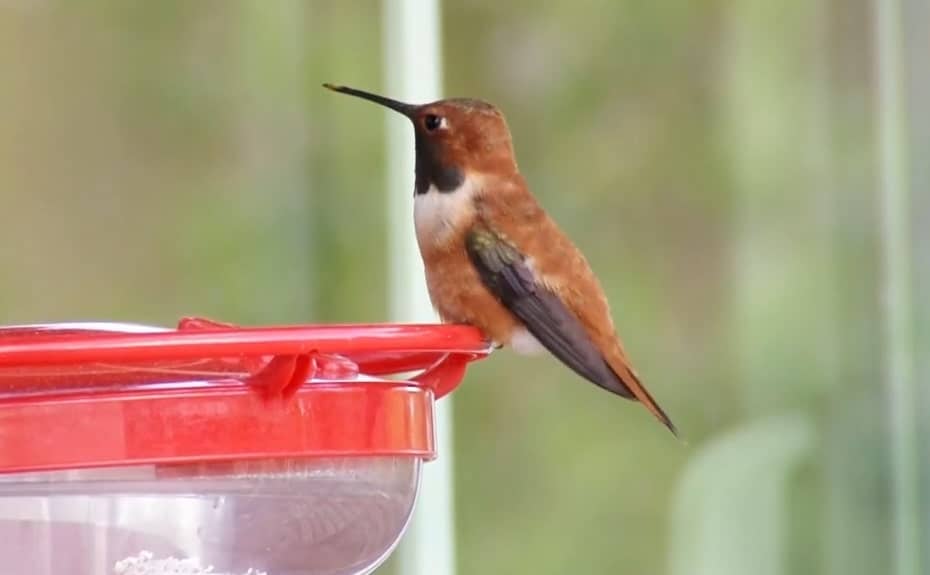
Female “Selasphorus rufus” tend to be heavier than other hummingbirds, though the difference is not much (about one gram more).
It is the only hummingbird with a reddish back, making it very easy to identify.
Despite its heavy frame, it is a slender bird. It has a medium-length bill and a tail that nearly tapers when folded.
Its color scheme is reddish, but the difference between the male and female is in the male’s orange-red gorget and the female’s rusty sides and undertail coverts.
Buff-Bellied Hummingbird
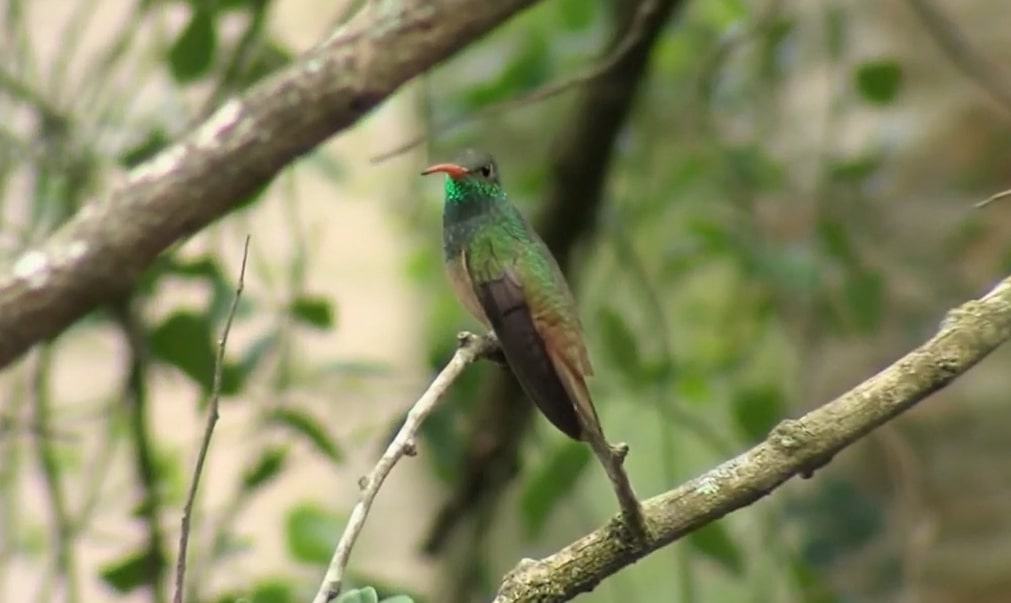
The “Amazilia yucatanensis” has a distinct appearance.
From the name, you can tell it is one of the hummingbird varieties with a buff belly (a protruding belly). It also has a red bill, making it different from other hummingbirds with black bills. The only black on its bill is at the tip.
Like many other hummingbird varieties, it has a green color palette but with a chestnut-colored tail.
It can be found in the lower Rio Grande delta of Texas, particularly in wood margins and thickets all year round.
Broad-Billed Hummingbird
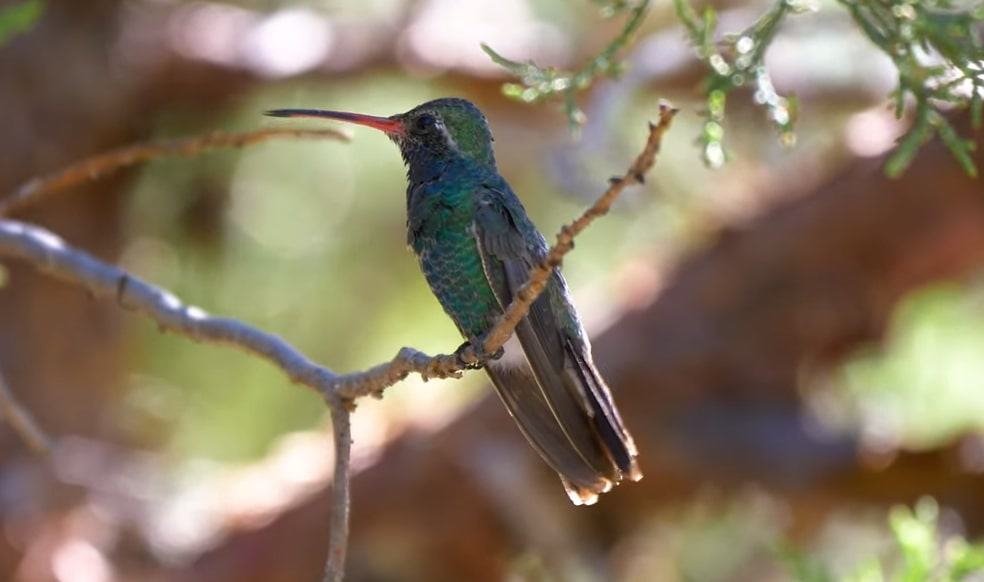
The “Cynanthus latirostris” is native to Arizona and New Mexico and scarcer in West Texas.
It is a small hummingbird, maxing out at three and three-quarter inches tall and two grams, the weight of a regular hummingbird.
Like its buff-bellied cousin, it has a red-tinted bill. The distinction is in the shade – the broad-billed hummingbird has a red-orange bill. It also has a blue-green chin and throat.
The male is dark green above and below, with white undertail coverts, and blue gorget. The female is duller above and gray below.
Lucifer Hummingbird
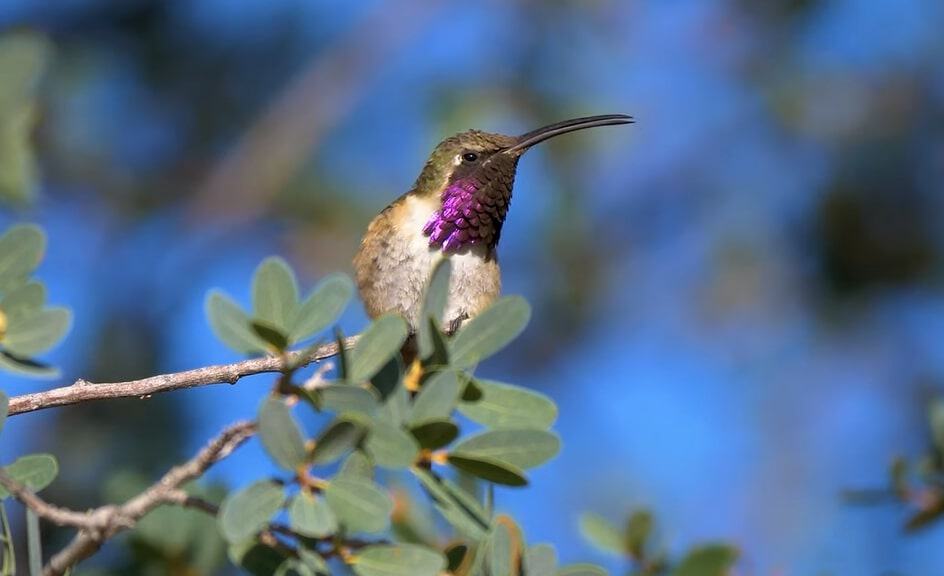
The “Calothorax lucifer” is mainly a species of northern and central Mexico and central Mexico. It can also be found in southeast Arizona, southwest New Mexico, and the Chisos Mountains of Texas.
This is the only hummingbird species with a decurved, downward-arching bill. It belongs to a group of hummingbird species with deeply formed narrow tails called “sheartails”.
The male Lucifer hummingbird has a green crown, purple throat, and long tail and the female Lucifer hummingbird is buff below, with a belly that’s often whitish, and a rounded tail.
Rivoli’s Hummingbird
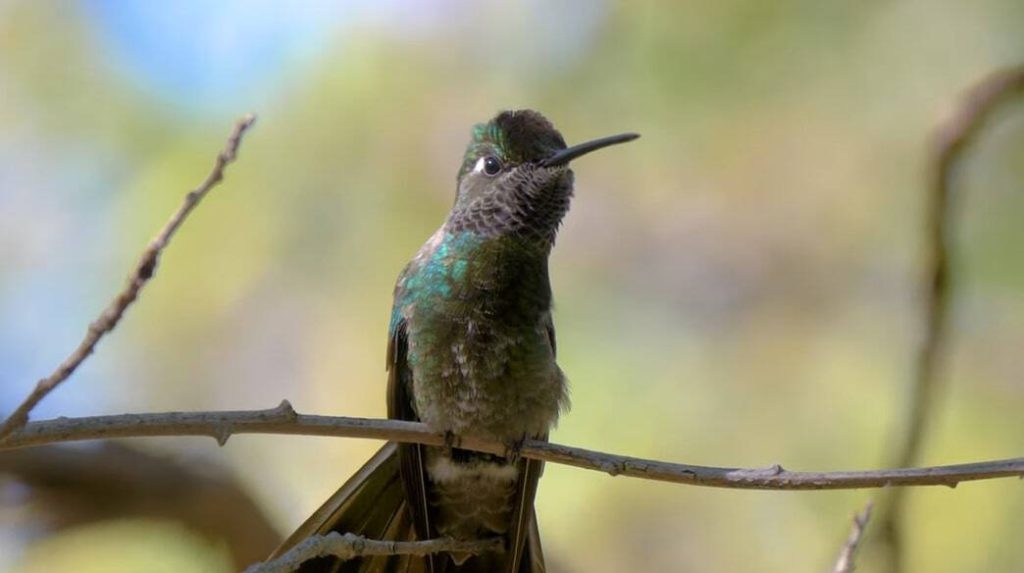
This big hummingbird is scientifically named “Eugenes fulgens”. It stands at five and a quarter inches tall and was named in honor of the Duke of Rivoli.
Formerly called the “Magnificent hummingbird”, a name it had until 2017, it is one of the mountain gem hummingbird varieties.
The bird has a long bill, a flat head, and a big tail. The males are differentiated by their green throats and violet-blue, purple crowns. The females have green upperparts, grayish underparts, and white streaks extending behind their eyes. They are found in the Chisos Mountains.
White-Eared Hummingbird
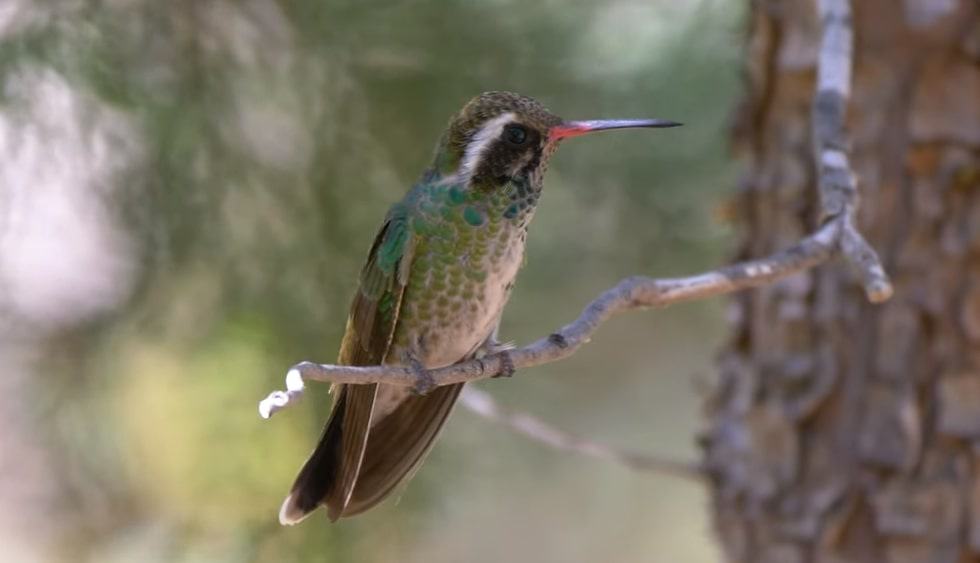
The square-tailed “Hylocharis leucotis” is a summer visitor to the mountains of the US southwest.
It is also seen in southeastern Arizona, southwestern New Mexico, and in areas around Texas, but rarely.
It is regularly sized, so you need to look out for its distinctive red/orange bill with a black tip. Also, it is the only hummingbird with a combination of long white stripes behind its eyes, a red bill, and a violet crown.
Adult male white-eared hummingbirds have a dark purple crown and chin with a green gorget.
Violet-Crowned Hummingbird
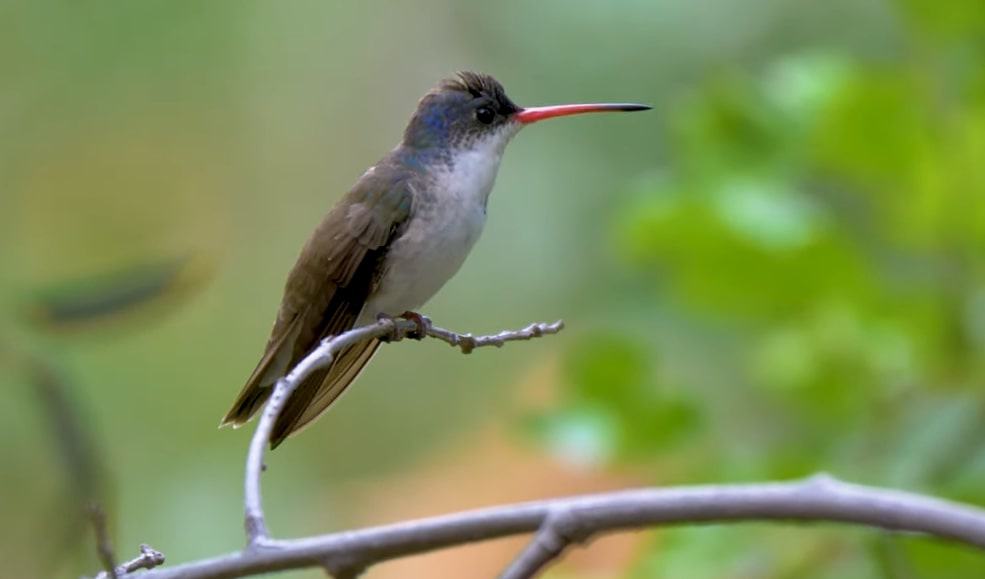
The “Amazilia violiceps” is a slightly bigger hummingbird, even though the difference is not too visible when viewed from afar.
Its height is four and a half inches and weighs the same as the average hummingbird.
This is a rare hummingbird species. Every other type but the Violet-Crowned hummingbird is frequently sighted. If you want to see it, you will have to visit California and West Texas.
The bird has a red/orange bill with a black tip, violet crown, white throat, and greenish tail. Its upper parts are bronze green.
FAQ
What is the most common hummingbird?
Only 15 out of over 300 different types of hummingbirds found in the world can be found in the US and Canada.
Of these 15, the Rufous, Allen’s and Anna’s hummingbirds can be found everywhere there are hummingbirds in the US or Canada.
Anna’s hummingbird is the most common one, as there is a big chance that any hummingbird you see is one.
Identifying it is easy: it is the only hummingbird with a red crown. It is also the second most popular hummingbird species in the US among ornithologists.
What is the rarest hummingbird?
In 2010, the Santa Marta sabrewing (Campylopterus phainopeplus) was sighted for the first time in over 50 years. Then it was lost to history again.
In 2022, another sighting happened and this time, scientists were prepared.
This is a hummingbird that was thought to have gone extinct. Scientists are looking for ways to repopulate the world with it.
This beautiful blue and green hummingbird is the rarest in the world.
In the US and Canada though, the violet-crowned hummingbird is the rarest hummingbird among those native to this part of the world.
Final Thoughts
Did you know that hummingbirds are the only birds that can fly backward?
Did you also know that in dives and flight away from danger, they can flap their little wings as many as 200 flaps a second?
When I thought they were already awesome, these facts made them even more awesome!
Take note that these are small birds. They are always at risk, no matter how many species there may be. When you have the opportunity to interact with them, treat them with the utmost care because they are important to the ecosystem, especially in pollination/agricultural activities.

